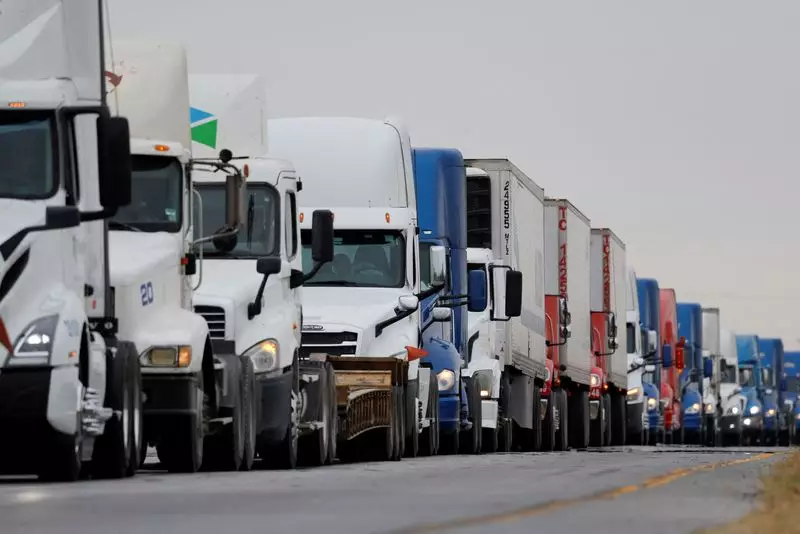Mexico’s economic landscape is an intricate tapestry woven with various factors that have become increasingly volatile. Recent insights from economists via a Reuters poll have illuminated the current sluggishness of Mexico’s economy and hinted at potential threats that could exacerbate its challenges. This article seeks to unpack these elements, examine the broader implications, and offer a fresh perspective on the road ahead for Mexico in 2025.
At the heart of the uncertainty surrounding Mexico’s economic performance is the potential policy changes from the United States. The election of Donald Trump brought with it promises of significant alterations in trade and migration policies, particularly the imposition of tariffs on imported goods. A proposed 25% tariff on Mexican products could serve as a double-edged sword, fostering a challenging economic environment while simultaneously igniting discussions about the necessity for robust trade agreements.
To comprehend the impact of these policies, it’s pivotal to recognize that Mexico operates under a free trade agreement with both the U.S. and Canada. Thus, any deviation from this framework raises alarms about the future of Mexican trade. The worry is palpable among economists, who predict that uncertainty may stunt private investment and consumer spending, leading to a feeble GDP growth forecast of only 1.2% in 2025, slightly down from 1.6% in the previous year.
While external influences from the U.S. loom large, there are also internal mechanisms that could potentially bolster the Mexican economy. The current administration under President Claudia Sheinbaum is expected to take proactive measures to mitigate tariffs through stricter immigration controls and addressing drug trafficking—all strategies aimed at satisfying U.S. concerns. This approach might shield Mexico from some of the adverse outcomes associated with U.S. policies, but it is an uncertain path.
Furthermore, initiatives directed towards low-wage workers and specific industrial sectors hint at a governmental focus on stimulating consumption from within. The idea is to support economic resilience despite external shocks. Although these measures may create a buffer against some of the predicted declines in investment and consumer spending, the actual impact remains to be seen.
Despite the challenges highlighted, one silver lining emerges from the concept of nearshoring. By relocating supply chains closer to the U.S., Mexico has the opportunity to become a primary destination for companies seeking to minimize costs and diversify risks. Nonetheless, the realization of this potential is hindered by political noise and a palpable investor hesitation, as firms await clarity on incoming policies that could shape the business landscape.
Investment in Mexico, previously seen as a cornerstone for growth recovery, is still in a precarious phase. If political stability and pro-business policies do not materialize, the expected surge in capital inflows may take longer to manifest, prolonging economic stagnation.
Complicating the economic outlook is the role of Mexico’s central bank, Banxico, which has been caught in a web of competing pressures. On one hand, rising global bond yields and inflationary concerns have limited options for monetary policy easing. Having cut the benchmark interest rate from 11.25% to 10% within the previous year, further cuts are anticipated but remain subject to the shifting tides of external pressures.
Interestingly, when probed on how Banxico should respond to the possibility of escalating tariffs from the U.S., the consensus leaned towards maintaining a cautious approach rather than aggressive cuts. This measured stance indicates a recognition of the complexity of the situation. As highlighted by experts, sustaining consumer confidence in a climate of potential tariff increases will require more than monetary adjustments; it calls for strategic economic initiatives that could mitigate adverse effects.
Mexico’s economic path towards 2025 unfolds against a backdrop of external threats and domestic aspirations. The interplay of U.S. tariffs, political stability, and proactive domestic policies will be instrumental in determining the trajectory of economic growth. While caution is advisable, it also remains imperative for Mexico to capitalize on emerging opportunities such as nearshoring and enhancing local industrial sectors. The next few years hold significant implications, not just for economic metrics but for the structural evolution of Mexico’s economy. The time for strategic repositioning is now, as policymakers and businesses alike navigate these transformative moments.

